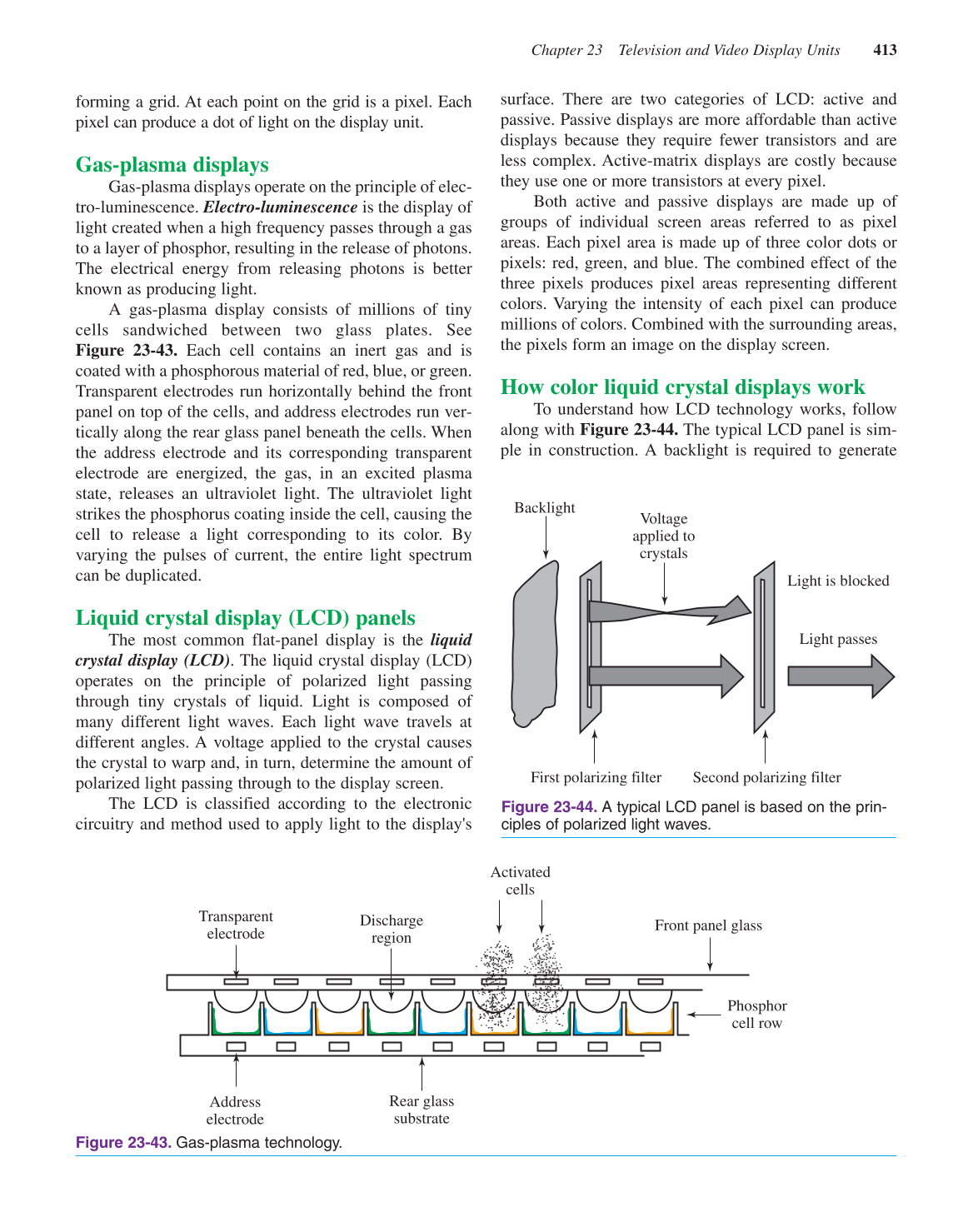forming a grid. At each point on the grid is a pixel. Each
pixel can produce a dot of light on the display unit.
Gas-plasma displays
Gas-plasma displays operate on the principle of elec-
tro-luminescence. Electro-luminescence is the display of
light created when a high frequency passes through a gas
to a layer of phosphor, resulting in the release of photons.
The electrical energy from releasing photons is better
known as producing light.
A gas-plasma display consists of millions of tiny
cells sandwiched between two glass plates. See
Figure 23-43. Each cell contains an inert gas and is
coated with a phosphorous material of red, blue, or green.
Transparent electrodes run horizontally behind the front
panel on top of the cells, and address electrodes run ver-
tically along the rear glass panel beneath the cells. When
the address electrode and its corresponding transparent
electrode are energized, the gas, in an excited plasma
state, releases an ultraviolet light. The ultraviolet light
strikes the phosphorus coating inside the cell, causing the
cell to release a light corresponding to its color. By
varying the pulses of current, the entire light spectrum
can be duplicated.
Liquid crystal display (LCD) panels
The most common flat-panel display is the liquid
crystal display (LCD). The liquid crystal display (LCD)
operates on the principle of polarized light passing
through tiny crystals of liquid. Light is composed of
many different light waves. Each light wave travels at
different angles. A voltage applied to the crystal causes
the crystal to warp and, in turn, determine the amount of
polarized light passing through to the display screen.
The LCD is classified according to the electronic
circuitry and method used to apply light to the display's
surface. There are two categories of LCD: active and
passive. Passive displays are more affordable than active
displays because they require fewer transistors and are
less complex. Active-matrix displays are costly because
they use one or more transistors at every pixel.
Both active and passive displays are made up of
groups of individual screen areas referred to as pixel
areas. Each pixel area is made up of three color dots or
pixels: red, green, and blue. The combined effect of the
three pixels produces pixel areas representing different
colors. Varying the intensity of each pixel can produce
millions of colors. Combined with the surrounding areas,
the pixels form an image on the display screen.
How color liquid crystal displays work
To understand how LCD technology works, follow
along with Figure 23-44. The typical LCD panel is sim-
ple in construction. A backlight is required to generate
Chapter 23 Television and Video Display Units 413
Transparent
electrode
Discharge
region
Address
electrode
Rear glass
substrate
Activated
cells
Front panel glass
Phosphor
cell row
Backlight
Voltage
applied to
crystals
First polarizing filter Second polarizing filter
Light is blocked
Light passes
Figure 23-44. A typical LCD panel is based on the prin-
ciples of polarized light waves.
Figure 23-43. Gas-plasma technology.
